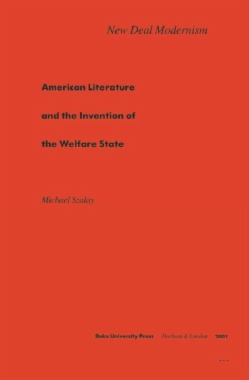In New Deal Modernism Michael Szalay examines the effect that the rise of the welfare state had on American modernism during the 1930s and 1940s, and, conversely, what difference this revised modernism made to the New Deal’s famed invention of “Big Government.”
Szalay situates his study within a liberal culture bent on security, a culture galvanized by its imagined need for private and public insurance.
Taking up prominent exponents of social and economic security—such as Franklin Delano Roosevelt, John Maynard Keynes, and John Dewey—Szalay demonstrates how the New Deal’s revision of free-market culture required rethinking the political function of aesthetics. Focusing in particular on the modernist fascination with the relation between form and audience, Szalay offers innovative accounts of Busby Berkeley, Jack London, James M. Cain, Robert Frost, Ayn Rand, Betty Smith, and Gertrude Stein, as well as extended analyses of the works of Ernest Hemingway, John Steinbeck, and Richard Wright.
- Contents
- Acknowledgments
- Introduction The Literature of the Welfare State
- Chapter One ‘‘The Whole Question of What Writing Is’’:Jack London, the Literary Left, and the Federal Writers’
- Chapter Two The Politics of Textual Integrity:Ayn Rand, Gertrude Stein, and Ernest Hemingway
- Chapter Three Wallace Stevens and the Invention of Social Security
- Chapter Four The Vanishing American Father: Sentiment and Labor in The Grapes of Wrath and a Tree Grows in Brooklyn
- Chapter Five‘‘The Death of the Gallant Liberal’’:Robert Frost, Richard Wright, and Busby Berkeley
- Conclusion New Deal Postmodernism
- Notes
- Index

